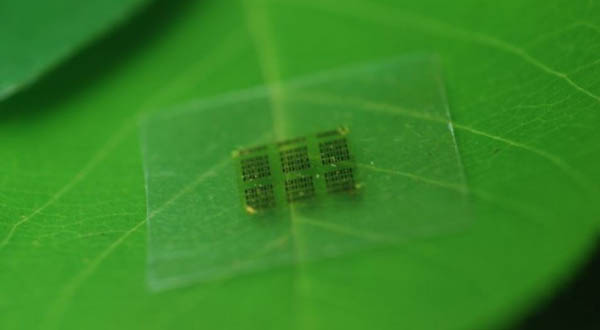Flexible, Biodegradable Computer Chips from Cellulose Nanofibrils
![]() Print this Article | Send to Colleague
Print this Article | Send to Colleague
University of Madison-Wisconsin (USA) professor Zhenqiang "Jack" Ma and his team recently published a paper in Nature Communications proposing a surprising material from which to manufacture semiconductor chips: cellulose nanofibril (CNF), a polymer ingredient used to create wood. The development of CNF from wood can be traced back to the 1980s. CNF, once extracted, can be made into a form of flexible nanopaper that will eventually dissolve back into the earth without any negative environmental effects.

According to a report earlier this week by Ziff Davis Publishing, New York, N.Y., USA, on its Extreme Tech website detailing the research, trees are often scaled down to microfibers that are used to build paper — but that further scaling down to a "nano" size could make CNF "very strong and transparent CNF paper," according to project leader Zhiyong Cai. CNF is a pseudo-plastic fluid that becomes gel-like at high temperatures, but viscous when shaken or disturbed.
The wood ingredient is used already not only in paper and paperboard, but also in barbecue sauce, Sargento and organic cheese, carrots, pears, bananas, potatoes, wheat straw, paints, food packaging, bamboo, soy hulls, and sunscreen. Using it in chips could lead not only to the successful production of biodegradable devices, but also aid in the development of flexible electronics for wearables, phones, and other kinds of suitable products.
The Earth-friendliness of CNF is an advantage of the ingredient as opposed to toxic materials. But CNF doesn’t come without other concerns – one being CNF’s susceptibility to expansion and shrinking when in contact with the elements due to its hydroscopic nature. To buttress CNF’s element-resistance, Ma and his team added epoxy coating, a water-resistant, acid-resistant, and solvent-resistant solution to the small semiconductor chip. Aalto University and North Carolina State University produced a water-resistant, durable CNF gel-like film for porous plates in 2013 that can be used for at-home medical tests, which would allow the porous plate to turn a certain color in the case of sickness, disease, or infection.
A full summary of the research in Nature Communications is available online.


